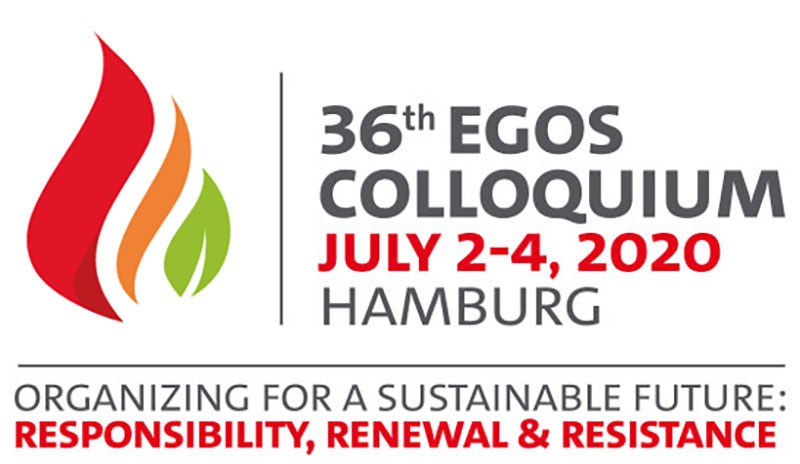Sub-theme 07: [SWG] Organizational Network Dynamics and Churn
Call for Papers
The explicit inclusion of time and time related processes in organization and management research is a neglected area of
study (Langley et al., 2013). This neglect extends to the literature on organizational networks, as witnessed by repeated
calls for studies accounting for network change (e.g., Knoben et al., 2006; Phelps et al., 2012). In partial response to these
calls, a timely special issue in Organization Studies (vol. 37, issue 3, March 2016) has attended to “The Transformative
and Innovative Power of Network Dynamics”. In this sub-theme, we seek to enrich this nascent stream of research on organizational
network dynamics and churn that should benefit greatly from improved access to longitudinal network data and new methods for
dynamic network analysis (e.g., Conaldi et al., 2012; van den Bunt & Groenewegen, 2007).
Organizational
network dynamics and churn concern the regularities by which networks change and evolve, as ties are created, modified, and
dissolved over time. In alignment with the overall topic of the EGOS Standing Working Group (SWG) 07 on “Organization(al)
Networks: Between Structure and Process”, this change comprises structural, network-endogenous regularities as well as agentic
change. The structural perspective assumes that regularities for network change result from the network itself determining
its future state, for instance, as prior network ties influence the emergence of future ties (Uzzi & Spiro, 2005). This
perspective on network dynamics can be linked to theories of path dependence (Sydow et al., 2009), network self-organization
(Robins et al., 2005), and inertia (Kim et al., 2006). The process perspective, by contrast, focuses on organizational actors
purposefully choosing and orchestrating their network ties (Emirbayer & Mische, 1998), relying on instrumental networking
(Brennecke, 2019; Casciaro et al., 2014). For instance, they may try to bridge structural holes (Zaheer & Soda, 2009)
or strengthen or weaken their ties (Mariotti & Delbridge, 2012). Network dynamics are further influenced by exogenous
events, such as technological developments (Fleming et al., 2007), performance feedback (Parker et al., 2016), or task requirements
(Perry-Smith & Mannucci, 2017).
Short paper submissions to enrich the nascent research on network dynamics
and churn can refer – but are not limited – to the following areas:
Interactions between structure and agency for network dynamics
Drivers and outcomes of network churn processes
Co-evolution of networks and organizational attributes, such as innovation
The role of individuals’ characteristics (e.g., cognitive capabilities, personality, skill sets, and behavior) for tie formation and dissolution
Cross-level similarities and differences between regularities that drive network change
References
- Brennecke, J. (2019): “Dissonant Ties in Intraorganizational Networks: Why Individuals Seek Problem-Solving Assistance from Difficult Colleagues.” Academy of Management Journal, in press; https://journals.aom.org/doi/10.5465/amj.2017.0399
- Casciaro, T., Gino, F., & Kouchaki, M. (2014): “The contaminating effects of building instrumental ties how networking can make us feel dirty.” Administrative Science Quarterly, 59 (4), 705–735.
- Conaldi, G., Lomi, A., & Tonellato, M. (2012): “Dynamic models of affiliation and the network structure of problem solving in an open source software project.” Organizational Research Methods, 15 (3), 385–412.
- Emirbayer, M., & Mische, A. (1998): “What is Agency?” American Journal of Sociology, 103 (4), 962–1023.
- Fleming, L., King III, C., & Juda, A.I. (2007): “Small worlds and regional innovation.” Organization Science, 18 (6), 938–954.
- Kim, T.-Y., Oh, H., & Swaminathan, A. (2006): “Framing interorganizational network change: A network inertia perspective.” Academy of Management Review, 31 (3), 704–720.
- Knoben, J., Oerlemans, L.A.G., & Rutten, R. (2006): “Radical changes in inter-organizational network structures: The longitudinal gap.” Technological Forecasting and Social Change, 73 (4), 390–404.
- Langley, A., Smallman, C., Tsoukas, H., & Van de Ven, A.H. (2013): “Process studies of change in organization and management: Unveiling temporality, activity, and flow.” Academy of Management Journal, 56 (1), 1–13.
- Mariotti, F., & Delbridge, R. (2012): “Overcoming network overload and redundancy in interorganizational networks: The roles of potential and latent ties.” Organization Science, 23 (2), 511–528.
- Parker, A., Halgin, D.S., & Borgatti, S.P. (2016): “Dynamics of social capital: Effects of performance feedback on network change.” Organization Studies, 37 (3), 375–397.
- Perry-Smith, J.E., & Mannucci, P.V. (2017): “From creativity to innovation: The social network drivers of the four phases of the idea journey.” Academy of Management Review, 42 (1), 53–79.
- Phelps, C., Heidl, R., & Wadhwa, A. (2012): “Knowledge, networks, and knowledge networks: A review and research agenda.” Journal of Management, 38 (4), 1115–1166.
- Robins, G.L., Pattison, P.E., & Woolcock, J. (2005): “Small and other worlds: Global network structures from local processes.” American Journal of Sociology, 110 (4), 894–936.
- Sydow, J., Schreyögg, G., & Koch, J. (2009): „Organizational path dependence: Opening the black box.” Academy of Management Review, 34 (4), 689–709.
- Uzzi, B., Spiro, J. (2005): “Collaboration and creativity: The small world problem.” American Journal of Sociology, 111 (2), 447–504.
- van de Bunt, G.G., & Groenewegen, P. (2007): “An actor-oriented dynamic network approach: The case of interorganizational network evolution.” Organizational Research Methods, 10 (3), 463–482.
- Zaheer, A., Soda, G. (2009): “Network evolution: The origins of structural holes.” Administrative Science Quarterly, 54 (1), 1–31.


